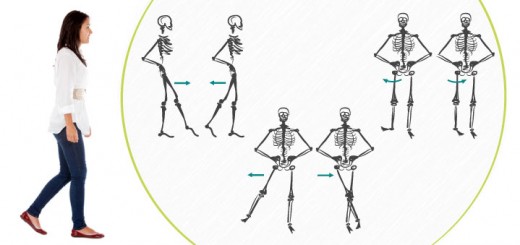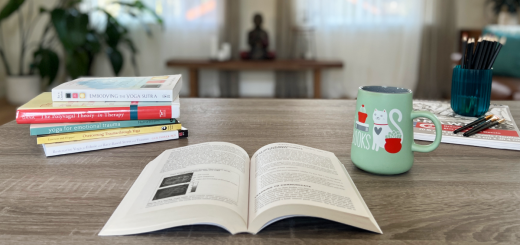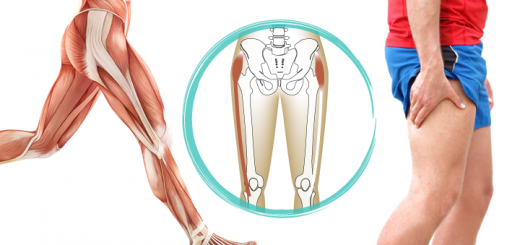How to balance pitta in your yoga practice
4In the past, I had a student who would barge into my studio for his private yoga session like a puffing steam engine. He told me that his work was so intense every day that half the time, he felt as if his hair was on fire. He was a perfect example of a pitta-dominant person who let his fire burn wild and consume his work, relationships, and health. He enjoyed that intensity, but his body didn’t. His body tried to stop him from doing his multiple physically strenuous activities with debilitating back pain.
 Two main qualities that define pitta are heat and intensity. When unbalanced, heat can lead to a scorched earth scenario. In excess, intensity can lead to having an overbearing, judgmental, my-way-or-the-highway approach to life. That is why managing pitta energy usually includes some form of:
Two main qualities that define pitta are heat and intensity. When unbalanced, heat can lead to a scorched earth scenario. In excess, intensity can lead to having an overbearing, judgmental, my-way-or-the-highway approach to life. That is why managing pitta energy usually includes some form of:
• Cooling and calming the system
• Softening the focus and redirecting it toward more useful objectives.
Folks with high levels of pitta in their systems need to be aware of the phenomenon of trapped heat. If you overfill your instant pot while cooking and block its steam-releasing vents, it can cause over-pressurization and an explosion. Similarly, if a pitta-dominant person abandons pressure-relieving (self-care) activities for extended periods, it can cause an unhealthy increase in internal pressure and cause dangerously high blood pressure, extreme digestive distress, vision and skin problems, and complete physical exhaustion.
Here are some general recommendations of how to use your yoga practice to keep your pitta in balance.

GENERAL GUIDELINES FOR YOGA PRACTICE TO KEEP PITTA IN BALANCE:
• Reframe your mental attitude: Avoid competing with and comparing yourself to other practitioners; focus on your own response to the practice instead.
• Avoid turning the practice into a vigorous workout: Focus on the meaning of the practice rather than the physical challenge.
• Avoid overheating: Focus on cooling down both physically and emotionally.
• Ensure proper compensation: Make sure that stronger poses are followed by simpler poses that return the body to the state of balance and equilibrium instead of continuously ramping up the intensity.
• Redirect your intense focus: Direct your intelligence within where you can use it to understand yourself.
ASANA SUGGESTIONS
• Keep your asana practice somewhat athletic but not overly vigorous or competitive. Focus on maintaining flexibility throughout the body.
• Pay special attention to the small intestine and liver; these are the sites of pitta accumulation. Aim to release tension in the mid-abdomen and distribute the energy away from the center in radiating pattern.
• Choose poses that cool and calm the system without being overly difficult (simple forward bends and twists, seated and supine poses).
DESIRED OUTCOME OF ASANA PRACTICE
An ideal pitta balancing practice would make the practitioner feel cool, content, clear, and calm, with tension released from the mid-abdomen. It would facilitate a meditative mood with settled emotions and slightly diffused awareness.
PRANAYAMA RECOMMENDATIONS
• Energy distribution: “Navel radiation effect” to move the energy from the center out into the rest of the body, Samana/Vyana vayu work.
• Cooling effect: Left nostril breathing, Shitali/Sitkari
• Calming effect: Langhana practices, focus on exhalation and hold after exhale
• Mental engagement: Choose more intricate breathing and meditation practices to keep the mind occupied.
MEDITATION SUGGESTIONS
Pitta-focused meditation needs to help release anger and aggression, to let go of the generally willful and controlling approach to life.
• Focus your strong mental energy on positive inner goals that facilitate inner growth.
• Place your meditation focus on letting go of control and high expectations, cultivating compassion, and finding deeper meaning.
• Choose imagery that counteracts dryness, heat, and intensity: mountain forests, a lake or an ocean, rain clouds, deep blue sky, moon and stars. Use white, blue, and green colors.
• Mantras and mudras that cool and calm the body and mind, direct attention, facilitate soft focus, and help embrace what is.
Below is an example of a pitta-managing yoga practice that, in the beginning, matches your pitta energy and then helps you balance it. In this yoga practice, we aim to release your pent-up energy with strong physical movement, redistribute your energy throughout the body to avoid “trapped heat,” cool and calm your system with breathing and meditation, and redirect your efforts toward things that matter to you. This practice will help you release tension from your abdomen, clarify your mind, and settle your frustrations so that you can walk away feeling cool, content, and clear.
Next time we will discuss strategies for balancing kapha—tune in!
[jetpack_subscription_form]
References
-
Yoga Therapy: A Guide to the Therapeutic Use of Yoga and Ayurveda for Health and Fitness by A.G. Mohan and Indra Mohan (affiliate link)
-
Yoga and Ayurveda: Self-Healing and Self-Realization by David Frawley (affiliate link)
- The Chemistry of Joy: A Three-Step Program for Overcoming Depression Through Western Science and Eastern Wisdom by H. Emmons, M.D. (affiliate link)




















I did this couple of days ago in the late afternoon/early evening + it helped to unwind + de-stress.
then
I did it this early morning + the results were irritation + wanting to go back to bed
Ayurveda/dosha + TIME OF DAY + SEASON also effect the outcome..this Kapha/Pitta needs to remember that she needs HEAT/MOVEMENT in the morning to get her going.
Excellent points, Ginny! So many factors are at play here. Sounds like just the first half of this practice would work better for you in the morning 🙂 We also have a wake-kapha-up practice coming this week, so that might be a better choice in the mornings 🙂
Olga what is the name of the mudra, not familiar with it.
The name of the mudra is Pushpaputa, which appropriately means “handful of flowers” 🙂